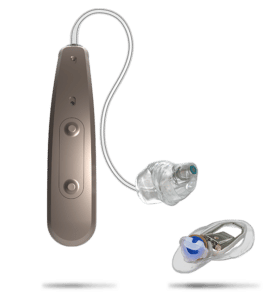- Featured
Part 1 dives into the speech understanding data and how increasing the bandwidth of processed sound in Earlens results in improved speech understanding from a number of perspectives
Earlens is the only hearing aid on the market that is designed to mimic the natural hearing process. The result? The broadest bandwidth provides the best sound quality and results in superior speech understanding.
Earlens is the only hearing aid on the market that is designed to mimic the natural hearing process. The result? The broadest bandwidth provides the best sound quality and results in superior speech understanding.
SOUND WITH TRADITIONAL HEARING AIDS:

FULLER, RICHER SOUND WITH EARLENS:

Closer to normal hearing in the critically important high frequencies.
More complete sound than acoustic hearing aids
Improved speech in noise
Closer to normal hearing in the critically important high frequencies.
More complete sound than acoustic hearing aids
Improved speech in noise
Patients prefer the Earlens extended bandwidth 8:1
82% spent less listening effort with Earlens compared to their acoustic hearing aid
98% rated Earlens sound quality superior to their existing HAs
Patients prefer the Earlens extended bandwidth 8:1
82% spent less listening effort with Earlens compared to their acoustic hearing aid
98% rated Earlens sound quality superior to their existing HAs
Revolutionary Technology to help differentiate your practice
The only non-surgical hearing solution available exclusively through ENT practices partnered with audiology
Dedicated Earlens practice development manager
Revolutionary Technology to help differentiate your practice
The only non-surgical hearing solution available exclusively through ENT practices partnered with audiology
Dedicated Earlens practice development manager



Earlens Products may be covered by one or more U.S. Patents and/or Trademarks.
Please click here to see patents and trademarks associated with individual Earlens Products.
| Cookie | Duration | Description |
|---|---|---|
| cookielawinfo-checkbox-analytics | 11 months | This cookie is set by GDPR Cookie Consent plugin. The cookie is used to store the user consent for the cookies in the category "Analytics". |
| cookielawinfo-checkbox-functional | 11 months | The cookie is set by GDPR cookie consent to record the user consent for the cookies in the category "Functional". |
| cookielawinfo-checkbox-necessary | 11 months | This cookie is set by GDPR Cookie Consent plugin. The cookies is used to store the user consent for the cookies in the category "Necessary". |
| cookielawinfo-checkbox-others | 11 months | This cookie is set by GDPR Cookie Consent plugin. The cookie is used to store the user consent for the cookies in the category "Other. |
| cookielawinfo-checkbox-performance | 11 months | This cookie is set by GDPR Cookie Consent plugin. The cookie is used to store the user consent for the cookies in the category "Performance". |
| viewed_cookie_policy | 11 months | The cookie is set by the GDPR Cookie Consent plugin and is used to store whether or not user has consented to the use of cookies. It does not store any personal data. |